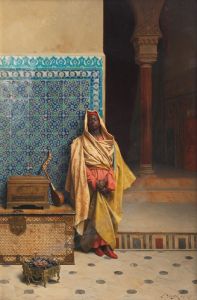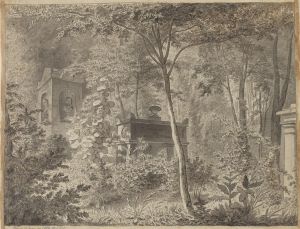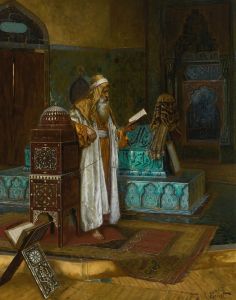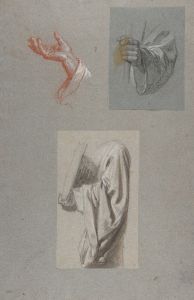
The Fountain Of Ahmed III, Istanbul
A hand-painted replica of Rudolf Ernst’s masterpiece The Fountain Of Ahmed III, Istanbul, meticulously crafted by professional artists to capture the true essence of the original. Each piece is created with museum-quality canvas and rare mineral pigments, carefully painted by experienced artists with delicate brushstrokes and rich, layered colors to perfectly recreate the texture of the original artwork. Unlike machine-printed reproductions, this hand-painted version brings the painting to life, infused with the artist’s emotions and skill in every stroke. Whether for personal collection or home decoration, it instantly elevates the artistic atmosphere of any space.
Rudolf Ernst was an Austrian painter known for his Orientalist works, which often depicted scenes from the Middle East and North Africa. His painting "The Fountain of Ahmed III, Istanbul" is one of his notable works that captures the essence of Ottoman architecture and culture. Ernst was born in Vienna in 1854 and studied at the Academy of Fine Arts in Vienna. He later moved to Paris, where he became part of the Orientalist movement, a genre that romanticized and depicted the East as exotic and mysterious.
"The Fountain of Ahmed III" is located in Istanbul, Turkey, and is an important example of Ottoman architecture. Built in 1728 during the reign of Sultan Ahmed III, the fountain is situated in the historic area of Sultanahmet, near the entrance to the Topkapi Palace. It is a public water fountain, known as a "sebil," which was a common feature in Ottoman cities, providing free drinking water to the public.
Ernst's painting captures the intricate details and grandeur of the fountain, showcasing its baroque style, which was influenced by European architecture but adapted to fit the Ottoman aesthetic. The fountain is adorned with elaborate carvings, calligraphy, and tiles, reflecting the artistic and cultural richness of the Ottoman Empire during the Tulip Era, a period marked by a fascination with art, culture, and the adoption of European influences.
In his depiction, Ernst focuses on the architectural beauty of the fountain, highlighting its ornate decorations and the vibrant atmosphere surrounding it. The painting likely includes figures dressed in traditional Ottoman attire, engaging in daily activities, which was a common theme in Orientalist art. These elements serve to transport the viewer to a different time and place, offering a glimpse into the life and culture of 18th-century Istanbul.
Ernst's work is characterized by his attention to detail and his ability to capture the light and color of the scenes he painted. His Orientalist paintings, including "The Fountain of Ahmed III, Istanbul," are celebrated for their technical skill and their ability to evoke a sense of wonder and curiosity about the East. While Orientalism as a genre has been critiqued for its often romanticized and sometimes inaccurate portrayals of Eastern cultures, Ernst's work remains an important part of art history, offering insight into the Western perception of the East during the 19th century.
Today, "The Fountain of Ahmed III" continues to be a significant historical and cultural landmark in Istanbul, attracting tourists and scholars interested in Ottoman architecture and history. Rudolf Ernst's painting serves as a visual documentation of this iconic structure, preserving its beauty and significance for future generations to appreciate.






![Portico of the Temple of Edfou [Idfû], Upper Egypt. Nov. 23rd, 1838.](/imgs/217527/s/david-roberts-portico-of-the-temple-of-edfou-idfu-upper-egypt-nov-23rd-1838-79b6cf5b.jpg)
![View from under the portico of Temple of Edfou [Idfû], Upper Egypt.](/imgs/217570/s/david-roberts-view-from-under-the-portico-of-temple-of-edfou-idfu-upper-egypt-1802940f.jpg)










